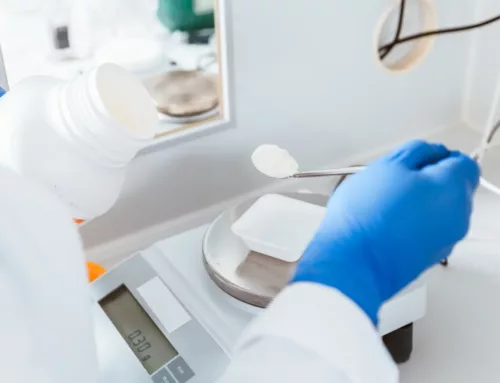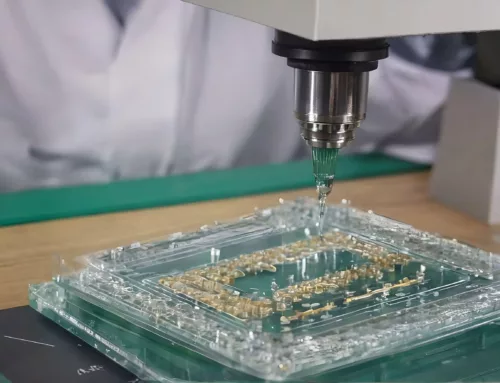
In the materials sciences, among many other disciplines. Powder technology research labs function as vital catalysts for innovation, that are tenaciously propelling scientific progress forward in inventing, modifying, and designing better methods, techniques, and particle properties that are an integral part of why scientific research and development keep moving forward. Better materials equate to tighter tolerances and open up more possibilities for innovation and technological advancement
These Poeder Technology Research labs serve as essential hubs where systematic testing and experimentation of powders are conducted, addressing and solving inherent characteristics or production challenges while occasionally even leading to transformative breakthroughs.
Research Focus
Their endeavors shed light on the cutting-edge equipment and methodologies used in research and testing, that play a crucial role in advancing the study of macro, micro, and nanoparticles. This focus on the nano-scale has opened the door to the exploration of a captivating frontier with seemingly endless potential. Nanoparticles, those minute entities with sizes ranging from 1 to 100 nanometers, exhibit extraordinary properties that defy conventional expectations. Their unique surface-to-volume ratio, quantum effects, and distinct surface characteristics have ignited the development of new production methods and material advancements across diverse sectors such as electronics, additives, medicine, and energy. Through meticulous powder design and testing, the latent potential of nanoparticles is gradually unraveling, revealing particle properties that were previously uncharted and unexplored, thus fueling the creation of innovative materials and applications.
Nanoparticle Analysis
To be able to work with, explore, and design better particles with beneficial characteristics for our evolving technology we need advanced analysis technology. Among the myriad of testing tools available for nanoparticle analysis such as particle size analyzers that offer meticulous insights into particle size distributions, enhancing our understanding of their size-related properties and behaviors, while scanning electron microscopes (SEMs) to provide a window into nanoparticle topographies, enabling scientists to visualize structures, morphologies, and elemental compositions with unparalleled precision. There is even more analysis to be done with the help of transmission electron microscopes (TEMs) that delve even deeper into the nanoworld, capturing high-resolution images of individual nanoparticles, which is an invaluable resource for scrutinizing atomic arrangements and defects.
If a scientist identifies specific crystalline properties in nanoparticles through x-ray diffraction (XRD) analysis, those particles could potentially be used in applications like catalysis, drug delivery, electronics, or even advanced materials in various industries. the XRD techniques essentially show the crystalline structures of nanoparticles, offering valuable data about phase composition, orientation, and lattice parameters.
Catalysts are substances that accelerate chemical reactions without being consumed themselves.
The surface area of nanoparticles affects their catalytic activity because more surface area means more active sites for reactions to occur. By using surface area analyzers to determine the surface area of catalytic nanoparticles, scientists can optimize their use in various catalytic processes, such as in industrial reactions for the production of chemicals, fuels, or environmental remediation. The understanding gained from surface area analyzers allows scientists to design, tailor, and optimize nanoparticles for specific applications where surface reactivity is a critical factor. This is useful in various catalytic processes, such as in
industrial reactions for the production of chemicals, fuels, or environmental remediation. In the field of pharmaceuticals, Raman spectroscopy can be employed to study drug-nanoparticle interactions. When drugs are encapsulated within nanoparticles for targeted delivery, the interaction between the drug molecules and the nanoparticle surface plays a vital role in drug release and efficacy. By using Raman spectroscopy, researchers can analyze the vibrational characteristics, bonding, and interactions between the drug particle and the nanoparticle, helping them optimize drug delivery systems for better therapeutic outcomes.
Influence Across Sectors
The influence of powder technology research labs extends far beyond the laboratory walls, they bridge the gap between scientific discovery and practical application. For instance, nanoparticles are proving to be indispensable in the field of medicine, facilitating targeted drug delivery, diagnostics, and medical imaging. This could eventually revolutionize healthcare through personalized and minimally invasive or even non-invasive treatments. In regards to electronics, nanoparticles are driving advancements by contributing to the development of more compact and highly efficient electronic components, including flexible displays, faster semiconductors maybe even room temperature superconductors development if
they get them working, and high-performance batteries with more density to name but a few. The energy sector also benefits significantly from nanoparticle applications, enhancing the efficiency of renewable energy sources such as solar cells, fuel cells, storage, and battery technology.
In essence, nanoparticles are the catalysts that expedite chemical reactions and have the ability to reduce energy consumption in a wide array of industrial processes. Their influence within the materials sciences continues to grow, even playing a pivotal role in environmental solutions, offering sustainable approaches in purifying contaminated water, air, and soil.
Nanoparticles and Beyond
Within powder technology, an intriguing avenue of exploration lies in the examination of surface modifications of nanoparticles. At present scientists can optimize the behavior and interactions of nanoparticles in various applications by customizing their surface properties. These modifications enhance stability, solubility, and dispersibility, rendering nanoparticles more compatible with specific environments. This level of control over nanoparticle surface characteristics has created remarkable advancements in fields such as drug delivery.
Modified nanoparticles can adeptly traverse physiological barriers, precisely delivering therapeutic agents to targeted sites within the body.
Furthermore, the incorporation of nanoparticles into multifunctional composites has opened pathways to new materials with exceptional mechanical, electrical, and thermal properties. These innovations are reshaping industries ranging from aerospace to automotive, where demand for lightweight and high-performance materials is burgeoning. Nanoparticles serve as crucial building blocks for pioneering materials and
also occupy a pivotal role in analytical techniques. Their distinct properties have been harnessed to develop highly sensitive sensors and diagnostic tools.
Nanoparticles can also be functionalized to selectively bind to specific molecules, enabling the detection of even trace amounts of analytes in intricate samples. This capacity has revolutionized domains like environmental monitoring, food safety, and medical diagnostics. Nanoparticle-based biosensors facilitate swift and accurate detection of pathogens, pollutants, and disease markers, providing vital information for prompt decision-making. Moreover, the
integration of nanoparticles into separation techniques has elevated efficiency in processes such as chromatography and filtration, contributing to advancements in chemical analysis and purification methods. As technology marches forward, nanoparticles are primed to assume increasingly integral roles in other developing fields. Quantum dots, a subset of semiconductor nanoparticles, stand at the vanguard of research in quantum computing and communication. These nanoscale entities boast distinct optical and electronic properties that position them as promising candidates for encoding and processing quantum information.
Nanoparticles are also under scrutiny for their potential to revolutionize energy storage and conversion.
Their expansive surface area and tunable properties render them ideal contenders for next-generation batteries, supercapacitors, and photovoltaic devices.
The capacity to harness sunlight and convert it into energy through nanoparticle-based solar cells holds the potential for clean and sustainable power generation.
A Nanoscale Odyssey
Powder technology research labs stand as beacons of scientific exploration, illuminating the path to a world powered by the potential of nanoparticles. With their remarkable properties and versatile applications, nanoparticles are slowly reshaping industries and driving innovations that have the potential to transform our lives. From medicine to electronics, from environmental remediation to energy production, nanoparticles are leaving an indelible mark on the landscape of scientific and technological progress. As we journey further into the nanoscale world, the horizon of possibilities continues to expand, inviting us to unlock new frontiers and redefine the boundaries of what is achievable. The story of nanoparticles is one of discovery, ingenuity, and limitless potential—a narrative that unfolds within the walls of powder technology research labs and extends to every corner of our interconnected world.




